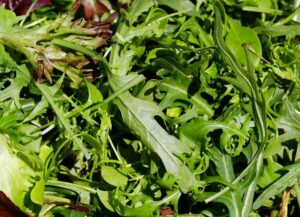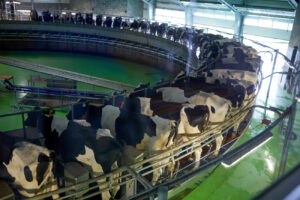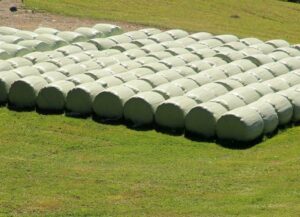Lucas Pantaleon
Neospora caninum is an important cause of abortion in dairy herds worldwide. The definitive hosts for this protozoa are members of the Canidae family (dogs, foxes, etc.) who become infected by eating meat from infected intermediate hosts, they then shed oocysts in their feces. Cattle, an intermediate host, acquire the infection by ingesting oocytes or via the trans-placental route. In cattle fetal death with either abortion or mummification can occur. Fetuses that became infected before the first 100 days of gestation, do seldom survive since their immune system is underdeveloped.
Abortion due to N. caninum normally occurs during the second or third trimester. A sero-positive calf develops when the fetus is able to mount an in-utero immune response against N. caninum. Rarely a seropositive dam could give birth to a seronegative calf. Necropsy findings of the fetus and placental tissues are not specific. However, microscopic lesions in fetus characterized by multifocal non-suppurative necrotizing encephalitis, myocarditis and myositis are highly specific for an infection with N. caninum.
In South America the most important causes of abortion in cattle are of infectious origin, such as leptospirosis, neosporosis and campylobacteriosis. The proportion of diseases causing abortion in herds varies by country, likely due to different laboratory technics and result interpretation. Examination of placental tissues is an important part in the diagnostic of an abortion. For diseases such as coxiellosis or chlamydiosis without examining the placenta, arriving at the final diagnosis would be very difficult. Furthermore, placentitis could in itself be a cause for abortion, in this case fetal lesions are likely to be absent.
Campylobacter fetus veneralis is a bacteria that causes bovine genital campylobacteriosis. Bulls are asymptomatic carriers and transmit the bacteria to cows during mating. Since bulls are the carriers of the disease, practicing natural breeding in herds increases the risk for genital campylobacteriosis and artificial insemination should be practiced instead. Infected cows develop infertility, embryonic death or abortion. Abortion more often occurs between the 4th and 6th month of gestation. Lesions caused by the disease are endometritis, placentitis and fetal hepatitis and pneumonia.
A recently published study investigated an abortion outbreak on a commercial dairy herd in Uruguay. There were 45 cows out of 650 Holsteins that aborted in a 3-week period. Postmortem examination and testing were performed on five aborted fetuses of an approximate gestational age of 180 days. Placental tissues were not available for examination. Blood from a group of cows was obtained for serologic testing.
Investigating and diagnosing bovine abortion is difficult because multiple causative agents could be involved, and fetal autolysis further hinders diagnostic of the causative microorganism. Researchers in this study found that two pathogens can act in conjunction to cause abortion outbreaks in commercial dairy farms. Therefore, it is important to keep in mind that performing a variety of diagnostic tests both in fetuses, placental tissues and dams is important to improve the chances for determining the etiology of the abortion.
Reference
Macías-Rioseco, M., Caffarena, R.D., Fraga, M., Silveira, C., Giannitti, F., Cantón, G., … Riet-Correa, F. 2019. Abortion outbreak caused by Campylobacter fetus subspecies venerealis and Neospora caninum in a bovine dairy herd. Revista Mexicana de Ciencias Pecuarias. 10(4): 1054-1063.
© 2020 Dairy Knowledge Center, LLC. All Rights Reserved.











